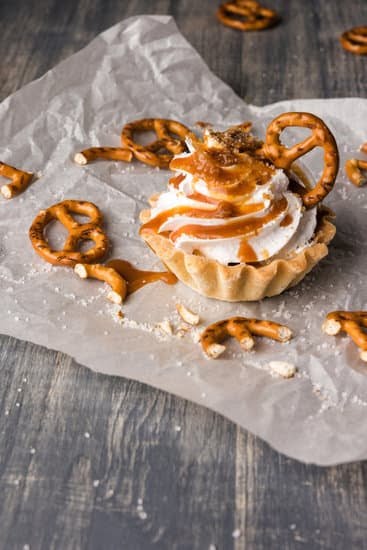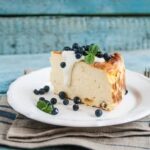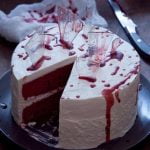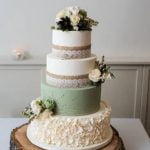Are you interested in learning how to cake decorate for beginners? Whether you’re looking to impress your friends with a beautifully decorated cake or considering a career in baking, mastering the art of cake decorating can be a rewarding and enjoyable skill to develop. In this article, we will guide you through the basics of cake decorating, including essential tools and supplies, simple techniques for beginners, tips for creating intricate designs, and resources for further learning and inspiration.
Cake decorating is a form of culinary art that involves using various tools and techniques to transform a plain cake into a visually appealing masterpiece. From piping buttercream flowers to creating intricate designs with fondant, there are endless possibilities when it comes to decorating cakes. As a beginner, it’s important to familiarize yourself with the essential tools and supplies needed for cake decorating, as well as selecting the right type of cake that will best showcase your decorations.
In the following sections, we will cover everything you need to know about getting started with cake decorating, including basic preparation techniques, working with frosting and icing, common mistakes to avoid, and where to find additional resources for further learning. By the end of this article, you will have the knowledge and confidence to begin your journey into the world of cake decorating.
Essential Tools and Supplies for Beginners
When starting to learn how to cake decorate for beginners, it’s important to have the right tools and supplies at hand. Without the proper equipment, it can be challenging to achieve the desired results in cake decorating. Some essential tools and supplies for beginners include a turntable, offset spatula, piping bags and tips, fondant smoother, and a cake leveler. These items will help make the process of cake decorating much smoother and more enjoyable.
In addition to tools, having the right supplies is crucial for successful cake decorating. It’s important to have a good quality cake mix or recipe, as well as various types of frosting and icing. Food coloring gels or powders are also essential for creating vibrant colors in your decorations. Other supplies such as fondant, edible glitter, and decorative elements like sprinkles or edible flowers can add flair to your designs.
As a beginner in cake decorating, it’s helpful to invest in a starter kit that includes all the basic tools and supplies needed to get started. This way, you can practice various techniques without having to gather individual items separately. Once you become more confident in your skills, you can expand your collection of tools and supplies based on your specific interests and preferences.
Learning how to cake decorate for beginners involves acquiring the right tools and supplies that will aid in creating beautiful and delicious cakes. By having the necessary equipment at your disposal, you can focus on honing your decorating skills and experimenting with different techniques. With the proper tools and supplies on hand, you’ll be well-equipped to embark on your cake decorating journey with confidence and creativity.
Choosing the Right Cake for Decorating
When it comes to cake decorating, choosing the right type of cake is crucial for a successful outcome. Different types of cakes can hold up differently when it comes to adding layers of frosting, decorations, and more. Here are some tips on choosing the right cake for your decorating project:
- Sponge Cake: Sponge cakes are a great option for beginners as they are light and airy, making them easy to work with when adding layers of frosting or fondant. Their spongy texture also makes them perfect for absorbing flavored syrups or fillings.
- Butter Cake: Butter cakes have a more dense and stable texture, making them ideal for creating multi-tiered cakes. The sturdiness of butter cakes also allows for intricate designs and decorations to be added without compromising the structure of the cake.
- Chocolate Cake: Chocolate cakes are a popular choice for decorating due to their rich flavor and versatility. They can be used as a base for a variety of designs and can hold up well under layers of frosting or ganache.
In addition to the type of cake, the size and shape of the cake will also play a role in its suitability for decorating. When starting out with cake decorating, it’s best to practice on simple round or square cakes before moving on to more complex shapes such as tiered or sculpted cakes. By choosing the right cake for your decorating project, you’ll set yourself up for success in creating beautiful and delicious confections.
When learning how to cake decorate for beginners, it’s important to consider not only the design aspect but also understanding how different types of cakes lend themselves to different techniques. By familiarizing yourself with various types of cakes and their properties, you’ll be better equipped to choose the right canvas for your creative vision.
Basic Cake Preparation Techniques
Before you can start decorating a cake, it’s crucial to ensure that the cake itself is properly baked and prepared. For beginners, this step is essential in making sure that the cake serves as a good canvas for your decorations.
First and foremost, it’s important to level the cake layers to create a flat surface for decorating. This can be achieved by using a serrated knife or a cake leveler. Once the layers are leveled, it’s also important to brush off any loose crumbs from the cake’s surface. This will prevent crumbs from mixing into the frosting and affecting the smoothness of your finished decoration.
Another basic preparation technique is applying a crumb coat. This thin layer of frosting seals in any loose crumbs on the cake’s surface and provides a smooth base for adding more frosting or decorations. A crumb coat ensures that your final decorations will have a clean and professional finish.
For beginners, understanding these basic cake preparation techniques is essential in achieving professional-looking decorations. Mastering these foundational skills sets you up for success as you continue to learn and grow in your cake decorating journey.
Remember that patience and practice are key when it comes to learning how to cake decorate for beginners. With time and dedication, anyone can develop the skills necessary to create beautiful and delicious works of art with their cakes.
Simple Decorating Techniques for Beginners
Cake decorating can seem daunting, especially for beginners, but with the right techniques and a little practice, anyone can create beautiful designs on their cakes. In this section, we will explore some simple decorating techniques that are perfect for those just starting out in the world of cake decorating.
Buttercream Piping
One of the easiest and most versatile cake decorating techniques for beginners is buttercream piping. By using different piping tips, such as star tips or round tips, you can create an array of designs on your cakes. From simple rosettes to elegant borders, buttercream piping is a great way to add visual interest to your cakes.
Fondant Cut-Outs
Working with fondant may seem intimidating at first, but using cut-out shapes can make it much more manageable for beginners. Simply roll out your fondant, use cookie cutters or specialized fondant cutters to create shapes, and then place them onto your cake for a professional-looking design. This technique is perfect for creating fun and whimsical decorations for birthday cakes or other special occasions.
Layering and Stacking
For those who want to keep it simple, layering and stacking different colored cake layers can create a stunning effect without requiring any intricate designs. By alternating colors or adding fillings between each layer, you can easily achieve a visually striking cake without needing advanced decorating skills.
By mastering these simple decorating techniques, beginners can build a strong foundation in cake decorating and gain the confidence to tackle more complex designs in the future. With practice and patience, anyone can learn how to cake decorate for beginners.
Working With Frosting and Icing
Understanding Different Types of Frosting and Icing
Before you start decorating your cake, it’s important to understand the different types of frosting and icing available. Buttercream, fondant, royal icing, ganache, and cream cheese frosting are some of the most popular options. Each type has its own unique characteristics and is suitable for different decorating techniques. As a beginner, it’s recommended to start with buttercream frosting due to its versatility and ease of use.
Using Piping Bags and Tips
One of the key tools you’ll need when working with frosting and icing is a piping bag and various decorating tips. Piping bags allow you to create intricate designs on your cake, from simple borders to elaborate flowers and intricate patterns. Different tips can produce different shapes and textures, so it’s helpful to experiment with a variety of tips to discover which ones work best for your desired design.
Practicing Proper Piping Techniques
Learning how to properly use a piping bag takes practice, but with patience and persistence, you can develop the skills needed to create beautiful designs on your cakes. Start by practicing basic piping techniques such as creating straight lines, scalloped edges, rosettes, and dots. Once you feel comfortable with these basics, you can move on to more advanced techniques like writing with icing or creating intricate lace designs.
As you continue to explore the world of cake decorating, experimenting with different types of frosting and icing will help you develop your own unique style. Don’t be afraid to try new techniques and push yourself out of your comfort zone. With time and practice, you’ll become more confident in your ability to create stunning designs that will impress your friends and family.
Tips for Creating Intricate Designs
Are you ready to take your cake decorating skills to the next level and create intricate designs that will wow your friends and family? With a few tips and techniques, you can elevate your cake decorating game and impress everyone with your artistic creations. Here are some valuable tips for creating intricate designs that will take your cakes to the next level.
Use Piping Techniques
One of the best ways to create intricate designs on cakes is by using piping techniques. With just a piping bag and different tips, you can pipe intricate borders, flowers, and other decorative elements onto your cakes. Practice using different piping tips to create various shapes and textures, and soon you’ll be able to create stunning designs with ease.
Incorporate Fondant Decorations
Fondant is a versatile medium that can be used to create intricate decorations for cakes. It can be rolled out and cut into shapes, molded into 3D figures, or used to cover an entire cake for a smooth, polished look. Experiment with fondant tools and molds to add detailed accents and embellishments to your cakes.
Add Edible Decorations
Incorporating edible decorations like edible pearls, glitter, metallic dragees, or hand-painted details can add an extra touch of elegance to your cake designs. Edible decorations allow you to customize your cakes with intricate patterns, textures, and colors that will make them truly stand out.
By incorporating these tips into your cake decorating repertoire, you’ll be well on your way to creating beautiful and intricate designs that will impress everyone who sees-and tastes-your creations. Remember that practice makes perfect, so keep experimenting with different techniques until you find what works best for you. Happy decorating.
Common Mistakes to Avoid in Cake Decorating
Learning how to cake decorate for beginners can be an exciting and creative experience. However, as with any new skill, there are common mistakes that beginners often make when decorating cakes. By being aware of these pitfalls, you can improve your cake decorating skills and create beautiful and professional-looking cakes from the start.
One of the most common mistakes beginners make when decorating cakes is not allowing the cake to cool completely before frosting. The warmth of the cake can cause the frosting to melt or slide off, resulting in a messy and uneven finish. To avoid this, it is important to let your cake cool for at least an hour before applying any frosting or icing.
Another mistake to avoid is using too much frosting or icing on the cake. While it may be tempting to pile on the frosting for a decadent look, excessive frosting can overpower the flavor of the cake and make it overly sweet. Practice using just enough frosting to cover the cake evenly without creating a thick layer that overpowers the taste and texture of the cake itself.
Additionally, beginners often struggle with achieving smooth and even frosting on their cakes. Many decorators try to spread the frosting with a knife or spatula, which can result in uneven and rough surfaces. To achieve a smooth finish, invest in a good quality offset spatula and practice using long strokes to spread the frosting evenly across the cake’s surface. With time and practice, you will be able to create beautifully frosted cakes that rival those from professional bakeries.
By being mindful of these common mistakes in cake decorating, beginners can improve their skills and create stunning cakes that are both visually appealing and delicious. Remember that practice makes perfect, so don’t be discouraged if your first few attempts are not flawless. With dedication and patience, you will soon be able to master the art of cake decorating and impress your friends and family with your beautifully decorated creations.
Resources for Further Learning and Inspiration
In conclusion, cake decorating can be a rewarding and enjoyable hobby for beginners. By following the essential tools and supplies needed for cake decorating, choosing the right type of cake, mastering basic preparation techniques, and learning simple decorating techniques, beginners can get started on their journey to becoming skilled at how to cake decorate for beginners. Working with frosting and icing opens up endless possibilities for creating beautiful designs and decorations on cakes.
As beginners progress in their cake decorating skills, they can explore more intricate designs and techniques. It’s important to keep in mind that practice is key when it comes to mastering the art of cake decorating. With patience and dedication, beginners can eventually create stunning masterpieces that will impress friends and family.
For those looking for additional guidance and inspiration, there are numerous resources available for further learning. Online tutorials, books, workshops, and community classes are all great options for expanding knowledge and gaining new ideas in the world of cake decorating. By continuing to learn and explore new techniques, beginners can grow their skills and develop their own unique style in cake decoration. Overall, with passion and commitment, anyone can learn how to cake decorate for beginners.
Frequently Asked Questions
What Does a Beginner Need for Cake Decorating?
A beginner in cake decorating will need basic tools such as a turntable, offset spatula, piping bags, and tips. It’s also essential to have a good quality cake stand and a set of food coloring gels for decoration.
How Do You Decorate a Cake in a Simple Way?
Decorating a cake in a simple way can be achieved by using easy techniques such as frosting the cake with a smooth layer, adding sprinkles or edible glitter for a festive touch, or using pre-made decorative icing designs for an effortless yet visually appealing result.
Can I Teach Myself to Decorate Cakes?
Yes, it is entirely possible to teach yourself how to decorate cakes through online tutorials, books, and practice. With dedication and patience, anyone can learn the art of cake decorating and develop their skills over time.

Welcome to our cake decorating blog! My name is Destiny Flores, and I am the proud owner of a cake decorating business named Cake Karma. Our mission is to provide delicious, beautiful cakes for all occasions. We specialize in creating custom cakes that are tailored specifically to each customer’s individual needs and tastes.





